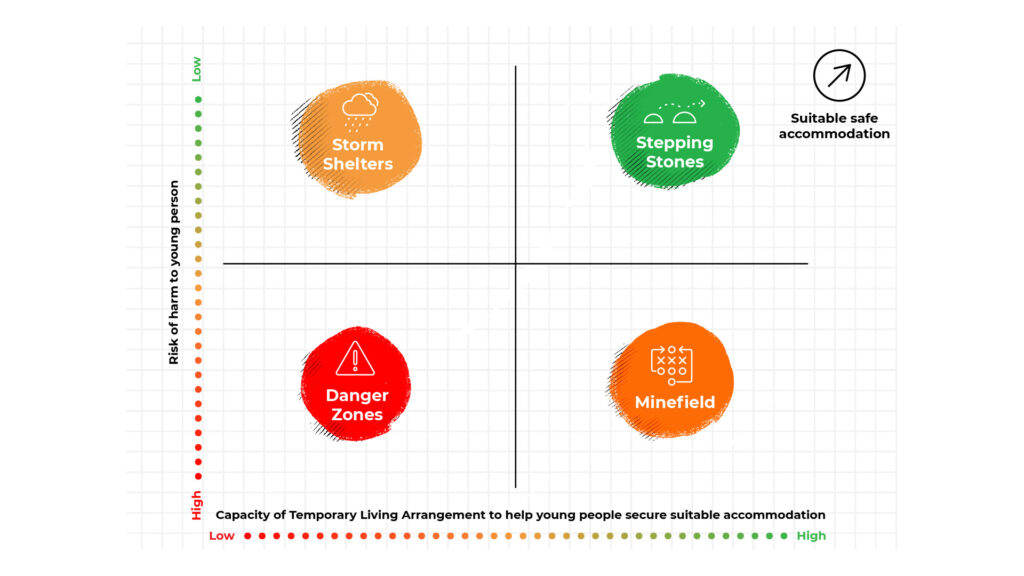
matrix
In our research, we found that Temporary Living Arrangements tend to differ on two dimensions:
- The level of risk that the environment young people are staying in cause them to experience harm
- The likelihood a young person will receive the support they need to take steps away from homelessness towards suitable accommodation

The Danger Zones and Stepping Stones tool assesses Temporary Living Arrangements based on these variables, providing an overall score in terms of the level of risk of harm, and in terms of the capacity of the support available to enable the young person to move on to more suitable accommodation. These scores correspond to the two axes of the Danger Zones and Stepping Stones assessment model.
Risk axis
The Danger Zones and Stepping Stones tool measures the factors identified through our research as increasing the risk of harm to young people in Temporary Living Arrangements, such as power imbalances between the young person and others in the accommodation, and poor or unhygienic living standards.
Support axis
The tool also measures the factors identified through our research that positively affect young people’s ability to move onto more suitable accommodation, including practical provisions, like access to a computer, as well as direct support from individuals within the immediate living environment.
Taking action
Using scores for both the level of risk, and the support available, the Danger Zones and Stepping Stones Tool categorises Temporary Living Arrangements as either a Danger Zone, Minefield, Storm Shelter or Stepping Stone. This categorisation supports informed decision-making about how to best support the young person.

danger Zone
The young person should be prioritised for finding alternative accommodation. All efforts should be made to address any ongoing threats which may be present and the young person should be provided with appropriate support to deal with any difficulties they may be facing due to their past experiences.

Minefield
The young person should also be prioritised for finding alternative accommodation. As with Danger Zones, all efforts should be made to address any ongoing threats which may be present and the young person should be provided appropriate with support to deal with any difficulties they may be facing due to their past experiences.

Storm shelter
It is safe for a young person to continue staying in a Storm Shelter if necessary. However, they should receive increased support and advice regarding their housing options to ensure they can take pro-active steps towards more suitable accommodation.

stepping stone
If the young person is staying in a Stepping Stone, it is appropriate that they continue to do so until they are ready and able to progress. Regular contact should be maintained to ensure that the young person’s living circumstances remain conducive to successful move-on.